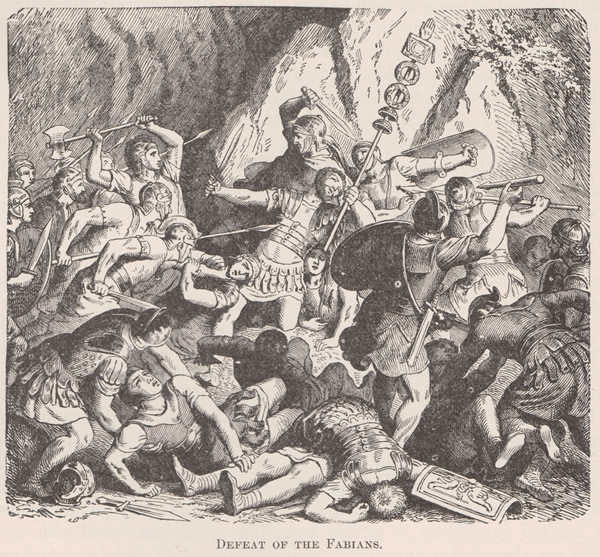Inspired by the “Battle of the Bastards” episode from Game of Thrones, we are looking at ancient accounts of bodies piling up during battle.
Starting with the oldest account I found—Cremera—the common problem with many of these ancient accounts immediately appears, as almost all of these historians were writing well after the events. For example, Greek historian Dionysius of Halicarnassus (c. 1st-century BC) wrote about Cremera more than 400 years after the battle.
At Cremera, 300 Roman Fabii, a ruling class of ancient Rome, found themselves surrounded by Etruscans and they retreated to a hill. Dionysius tells us
Not long afterwards those also who had seized the hill, being oppressed by both hunger and thirst, resolved to charge the enemy; and engaging, a few against many, they continued fighting from morning till night, and made so great a slaughter of the enemy that the heaps of dead bodies piled up in many places were a hindrance to them in fighting. (9.21.2).
The story is more myth than reality, as 300 warriors fighting to death against insurmountable odds mimics Herdotus’s account of the Battle of Thermopylae, a popular tale in Rome during Dionysius’s time. Like Leonidas and his 300 Spartans, all the Fabii died save for one. ((Two Spartans survived Thermopylae, but you get the idea.))
Imitation aside, the Battle of Cremera would have taken place a mere three years after Thermopylae (480 BC). Dionysius wanted us to believe that sacrificing 300 warriors was in vogue back then. In reality, the account was likely an attempt to establish these Roman ancestors as virtuous warriors on par with the famous Spartans at Thermopylae.

As for the description of bodies piling up on the battlefield, the other ancient accounts from Livy (2.48-50) and Diodorus (11.53.6) do not mention them. It is possible Dionysius had access to a source that told of the bodies, but then it is also hard to imagine Livy and Diodorus would leave out this salacious part of the story when they were both eager to count the 300 dead Fabii.
Still, Dionysius described the piles of bodies as a “hindrance” or obstacle (Greek: ἐμποδὼν) that affected the fighting. He also describes multiple piles of bodies. If this was simply Dionysius adding color to his battle narrative, then he envisioned exactly what we are looking for in this exercise.
